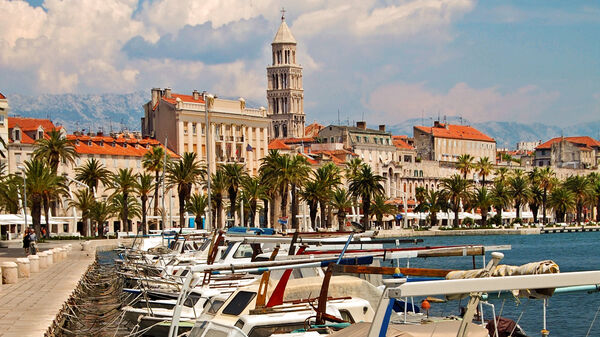When to Go to Croatia and Slovenia

By Rick Steves and Cameron Hewitt
Tourist traffic in Slovenia and Croatia (especially the coastal towns) is extremely seasonal. The peak season hits suddenly and floods the towns like a tidal wave, only to recede a couple months later — leaving empty streets and dazed locals. In general, the tourist season runs roughly from mid-May through early October, peaking in early August. (In bigger cities and landlocked towns, the seasonal influence is much less pronounced.)
Peak Season
Summer — especially July–August — is peak-of-peak season. Boats, buses, accommodations, and restaurants are overstuffed with mostly European vacationers. Temperatures and prices soar. Visiting Croatia in summer is like spending spring break in Florida — it can be fun, but also miserably crowded and expensive.
Shoulder Season
Spring and fall (especially mid-May–June and Sept–early Oct) offer the best mix of good weather and fewer crowds, though popular spots won't be entirely "untrampled." Late June and early September are nearly as busy as peak season (particularly on weekends), but the rush subsides the farther you get off-season. By the first week of October, some restaurants are already closing down for the winter. Shoulder season is when most Rick Steves readers are visiting, and it's my favorite time here, too — I enjoy the milder weather and less-frenzied locals.
Off-Season
Small towns are dead as a doornail from mid-October to mid-May. Many resorts close down entirely, with only one hotel and one restaurant remaining open through the lean winter months; many residents move to the interior to hibernate. Anything that's open keeps very limited hours (weekday mornings only). Boat and bus schedules can be dramatically reduced, and some boat connections or mountain roads (such as Slovenia's Vršič Pass, in the Julian Alps) are closed. The weather can be cool and dreary, and night will draw the shades on your sightseeing before dinnertime. If traveling in the winter, skip the smaller towns, especially on the coast (though bigger cities like Split and Dubrovnik are still viable).
Seasonal Flex Pricing
Because of this region's extreme seasonality, prices vary wildly. (A hotel receptionist once showed us a binder with hundreds of potential rates they could charge, based on room size, type, views, season, and length of stay.) Museum prices and opening times can also be volatile — and difficult for our guidebooks (or any resource) to predict with any precision. If you have your heart set on a particular place, it's always smart to call ahead to double-check these details.
- See the main holidays and festivals for Croatia, Slovenia, and Bosnia-Herzegovina
- See our recommended itinerary for Croatia, Slovenia, Bosnia-Herzegovina, and Montenegro
Cameron Hewitt is the co-author of the Rick Steves Croatia & Slovenia guidebook.

